PDF chapter test TRY NOW
We spend millions of rupees each year in fighting fires. And we spend more trying to find new ways of preventing fires from happening and getting out of control. On the whole, we have learnt rather well to control fire and put it to good use in our everyday life.
Long ago, there were no firemen. When fire broke out, everybody became a firefighter. People formed human chains (they still do if required) and passed buckets of water from a well or a pond to the blaze. Now there are laws about building construction which ensure that space is left between buildings to reduce the fire risk. Every new building, especially a public place, must ensure observance of fire prevention norms. Bands of firefighting workers with special equipment, known as fire brigades, are there to put out fires. Firefighters are highly trained people. They possess many skills. They cut off electricity supply, knockdown dangerous walls, spray water and other materials to bring fire under control. They are also trained in first aid so that they can help people suffering from burns or from the effects of smoke.
When people evolved, and our society became more advanced, the art of fire fighting had also developed.
A long time ago, when science and technology were still infants, people fought fires differently. There were no firefighters or fire service back then. Instead, people acted together. When there was a fire, the entire village gathered and fought it together.
A long time ago, when science and technology were still infants, people fought fires differently. There were no firefighters or fire service back then. Instead, people acted together. When there was a fire, the entire village gathered and fought it together.
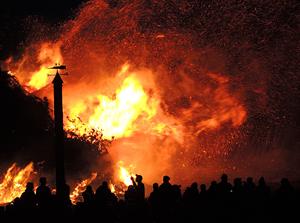
People gathered and fought fire
The people used to form a human chain; there would be people standing in a line from the place of fire to the nearest well or pond. The person closer to the water source would keep passing buckets of water, and the person at the fire would spray or pour it on the fire. People did this until they stopped the fire.

People formed human chain to fight fire in the earlier days
However, things have changed now. Today, when we think about fire accidents, we always think about the fire service, firefighter, or the red cylinder known as the fire extinguisher.
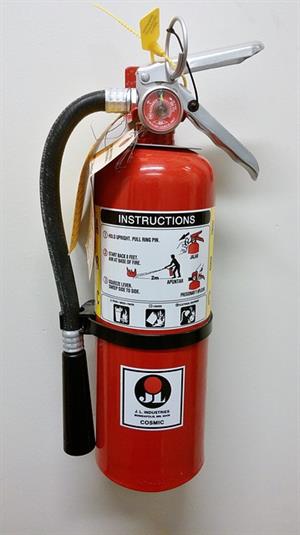
A fire extinguisher
Every year, we spend a lot of time, effort, and money in fighting fires. But more importantly, we have been trying to find new methods to prevent fire hazards.
For instance, we have laws and regulations while constructing new buildings. To control fire and reduce the fire risk, you must ensure that space is left between buildings. Every new construction, especially a public place, must ensure observance of fire prevention norms.
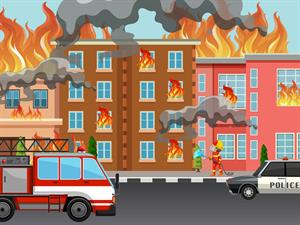
Fire spreads easily and causes more damage when there is no proper space between buildings
Every country and state has a well-functioning fire department or fire brigades. Each department will have several teams consisting of highly trained people who possess many skills. They also have several advanced equipment to fight fire. They also have emergency contact numbers through which we could reach them. For instance, in India, you can reach the fire service through the national (Indian) emergency fire service number- \(101\), or by dialling \(112\)- the national emergency number.
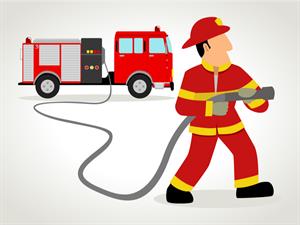
A firefighter (fireman) with his fire engine (firetruck)
The firefighters put out fires. They control it by cutting off the electricity supply, breaking down (usually using physical strength) dangerous walls, spraying water and other materials to bring the fire under control. They are also trained in first aid so that they can help people suffering from injuries or the effects of smoke.
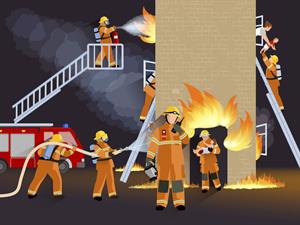
A team of firefighters in action
Although fire hazards are still a concern, it could be said that we have learnt rather well to control fire and put it to good use in our everyday life.
Meanings of difficult words:
Sl. No. | Words | Meanings |
1 | Blaze | Fire |
2 | Firemen | Fire fighters; people who are trained to deal with fire accidents and disasters |
3 | Norms | A standard or pattern, especially of social behaviour that is typical or expected |
4 | Equipment | The necessary items for a particular purpose |
5 | Brigade | An organization with a military or quasi-military structure |
6 | Possess | Contain |
7 | Knockdown | Breaking down a thing using the physical strength |
Reference:
National Council of Educational Research and Training (2007). Honeycomb. Fire: Friend and Foe (pp. 114-118). Published at the Publication Division by the Secretary, National Council of Educational Research and Training, Sri Aurobindo Marg, New Delhi.
